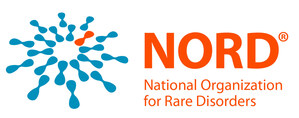Cure MLD, The Calliope Joy Foundation and NORD Launch A Research and Engagement Study of Metachromatic Leukodystrophy (MLD)
Research study is open to participants worldwide to advance understanding and treatments for Metachromatic Leukodystrophy, a recessive genetic disorder that is characterized by the accumulation of fats (lipids) called sulfatides causing damage to the nervous system.
WASHINGTON, Aug. 16, 2021 /PRNewswire/ -- Cure MLD, an initiative of The Calliope Joy Foundation, and the National Organization for Rare Disorders, Inc. today launched a wide-reaching study to research Metachromatic Leukodystrophy (MLD) that causes irreversible damage to the white matter in the brain. MLD currently has no cure.
The new study, Metachromatic Leukodystrophy Community United Research and Engagement Survey (MLDCures), creates a platform for patients around the world to share information about Metachromatic Leukodystrophy (MLD). Its purpose is to build an international resource to be used by scientists in future research.
"We are thrilled to announce the launch of MLDCures, a patient contact registry for families impacted by metachromatic leukodystrophy," said Maria Kefalas, cofounder of Cure MLD and The Calliope Joy Foundation. "This registry is so important for fostering understanding between MLD families and supporting organizations in advocacy, research, and medicine."
To help drive awareness and participation, Cure MLD and The Calliope Joy Foundation will launch an online campaign that demonstrates how the survey will be used and how individuals can register.
"Our goal is to enroll as many patients, or their parents or legal guardians, as possible," said Kefalas. "The success of the Survey is dependent upon community participation."
Metachromatic Leukodystrophy Community United Research and Engagement Survey (MLDCures) is a Community Survey that consists of electronic surveys to collect information about the patient experience and disease progression. Patients, or their caregivers or guardians, can enter information from anywhere in the world. The data is made anonymous and stored securely in an online portal. Cure MLD may share the data with individuals or institutions conducting research or clinical trials, as approved by the study's governing board that includes scientists, doctors and patient advocates.
Cure MLD is launching the study in collaboration with the National Organization for Rare Disorders (NORD), an independent charity that built its IAMRARE® platform as part of its mission to help identify and treat all 7,000 rare diseases. Cure MLD and The Calliope Joy Foundation are members of NORD and the organizations work together to eliminate the challenges that rare disease patients face.
"Patient-powered natural history studies can transform how patients and caregivers inform and shape medical research and translational science," said Stephanie Christopher, Associate Director of Research Programs at NORD. "We hope by studying the diagnostic odyssey in real-time we can identify obstacles and solutions with near-immediate benefits to patients. We are so pleased to welcome the Metachromatic Leukodystrophy patient community to our IAMRARE Community!"
Metachromatic Leukodystrophy (MLD) is a recessive genetic disorder affecting both males and females, that occurs when both copies of the gene are affected and is characterized by the accumulation of fats called sulfatides. This causes the destruction of the myelin sheath surrounding the nerves in both the central and peripheral nervous systems. MLD is caused by changes mutations in the ASA gene (also known as ARSA) and in rare cases in the PSAP gene.
There are three types of Metachromatic leukodystrophy that are distinguished by the age of the onset of symptoms: Late-Infantile MLD, Juvenile MLD, and Adult MLD. All subtypes are progressive and ultimately affect both intellectual and motor function. Symptoms vary by type and may include difficulty talking, seizures, difficulty walking, and personality and behavior changes.
The rate of incidence of MLD is unknown, however it is estimated to be between 1 in 40,000 and 1 in 160,000. The Navajo, Alaska Native, and certain Middle Eastern populations may have a higher prevalence rate for the disease.
Diagnosis of MLD is made via genetic and biochemical testing including bloodwork, urinalysis, and MRI imaging of the brain. In pre- or minimally symptomatic children, stem cell transplantation can be considered. Otherwise, treatment and therapy at this time are symptomatic and supportive. There are no known cures to date.
About Cure MLD & The Calliope Joy Foundation
The Calliope Joy Foundation is a charitable non-profit organization with 501(c)(3) status. When Pat Carr and Maria Kefalas' youngest child was diagnosed with leukodystrophy in 2012, it was Cal's older brother who had the idea to sell cupcakes to find a cure for Cal's disease. The Calliope Joy Foundation was launched in 2013, and since then, we have been on a mission to provide cures and community to families impacted by leukodystrophy.
Cure MLD is an initiative of The Calliope Joy Foundation. Cure MLD is a global network of patient advocates and nonprofits dedicated to helping families impacted by MLD. Cure MLD connects families with resources, information, support, and others dealing with MLD. Visit our website (curemld.com) to learn about treatment options and clinical trials for gene therapy and enzyme replacement therapy, and to find doctors around the world who are experts in treating MLD.
About National Organization for Rare Disorders (NORD)
The National Organization for Rare Disorders (NORD) is the leading independent advocacy organization representing all patients and families affected by rare diseases in the United States. NORD began as a small group of patient advocates that formed a coalition to unify and mobilize support to pass the Orphan Drug Act of 1983. Since then, the organization has led the way in voicing the needs of the rare disease community, driving supportive policies, furthering education, advancing medical research, and providing patient and family services for those who need them most. Together with over 330 disease-specific member organizations, more than 15,000 Rare Action Network advocates across all 50 states, and national and global partners, NORD delivers on its mission to improve the lives of those impacted by rare diseases. Visit rarediseases.org.
SOURCE National Organization for Rare Disorders (NORD)

Related Links
WANT YOUR COMPANY'S NEWS FEATURED ON PRNEWSWIRE.COM?
Newsrooms &
Influencers
Digital Media
Outlets
Journalists
Opted In





Share this article